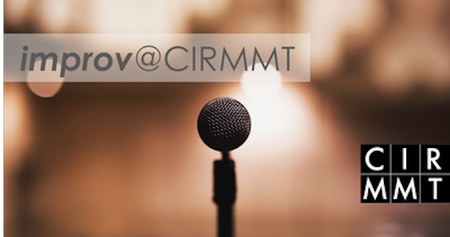Access
Program
Theodore HABER - Grown
- Maryse Legault, clarinet
Greg BRUCE - Etude No. 3 for Feedback Saxophone
Jônatas MANZOLLI - Carta ao Rito da Arena
- Alexandre Zamith (piano)
- Mariana Andraus, Daniele Gatti, Vânia Pontes (dancers)
- Jônatas Manzolli (remote live-electronics)
Benjamin LAVASTRE - Premise for an Instrumental Interaction
Erich BARGANIER - Landscape with Cigar Smoke and Greasewood
Yuval ADLER - Scorecraft
Program Notes + Biographies
Landscape with Cigar Smoke and Greasewood is a piece written and performed by Barganier for electric guitar, fixed electronics, video and GuitarAMI gestural controller. The work takes inspiration from “Landscape With Sex and Violence,” a collection of poetry by Lynn Melnick that focuses on how sexual violence has become such an entrenched part of North American culture, it can no longer be seperated from physical landscapes. The composition relies on gestures and unrelenting electronic soundscapes to create a sonic response to this piece of writing.

Erich Barganier is a composer and multi-instrumentalist hailing from St. Petersburg, Florida. He writes chamber, orchestral, film, solo instrumental and electronic music that explores experimental technology, the edge of noise, improvisation, generative processes, and new forms of notation. Barganier's works have been presented by Bang on a Can, The International Computer Music Conference (ICMC), New York City Electroacoustic Music Festival (NYCEMF), Mostly Modern Festival, The New Music Gathering, National Sawdust, Le Poisson Rouge, Diffrazioni Festival, and more. As a performer, Barganier has studied and played music across a wide swathe of styles and genres. His "twinkling instrumental work" has been praised by Bao-le Huu of the Orlando Weekly and helped garner the title of "Best Local Album Release of 2017" from Tampa Bay's Creative Loafing for the Baker-Barganier Duo's debut album ...and darkness was upon the face of the deep. Erich has additionally performed as a multi-instrumentalist, as a solo artist, and in ensembles, having supported the likes of Joan LaBarbara, Elliott Sharp, ETHEL, Robert Mirabel, Esther Lamneck and many others.
https://soundcloud.com/erich-barganier
Etude No. 3 for Feedback Saxophone - In his final etude related to his work as a DMA student, Bruce has added a contact mic on his neck to his original feedback saxophone system. Combining amplified vocalizations with acoustic feedback and the saxophone, he explores an expanded set of textures and harmonic possibilities.Greg Bruce is supported in part by funding from the Social Sciences and Humanities Research Council, as well as TaPIR Lab at the University of Toronto.
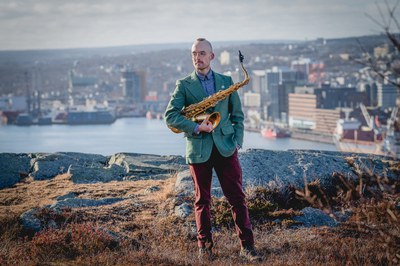
Greg Bruce is a saxophonist searching for new sounds through the forgotten opportunities of analogue technology. His work blends contemporary classical, folk, and minimalist musics; and exposes the sonic potential of acoustic feedback, contact microphones, and tape media. Through a breath-powered instrumentarium – a saxophone augmented by state of the art, lo-tech – Greg seeks to investigate the human/machine dialectic and invoke a post-digital future.
Premises for an Instrumental Interaction is a piece for karlax. This controller has no sound identity, it is a kind of flexible "vase" to be filled with sounds and gestures, a kind of sound choreography mixing processed acoustic sounds and electronic sounds.. In the end, the piece is a phantasmal instrumental interaction, like a ventriloquism.
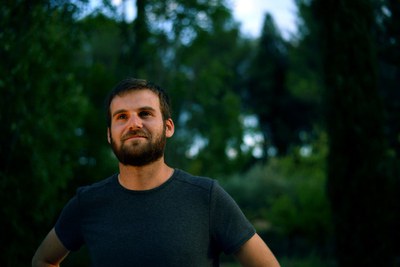
Benjamin Lavastre is a composer and guitarist. He is currently working on a PhD at McGill University on the interactions between digital instruments (especially the Karlax) and acoustic instruments.
https://soundcloud.com/user-215582074
Grown was a collaboration between clarinetist Maryse Legault and composer Theo Haber. We wanted to experiment with writing a bass clarinet piece with live electronics that explored the ways that clarinet sound can be obscured and how the acoustics of the performance space can be altered. We activated various reverbs/delays to change the wetness of the space. To obscure the clarinet sound we used an ableton-live “audio -> midi” plugin sent to a wave table digital synthesizer with a granular delay and clarinet multiphonics aimed to distance the sound heard and the performance action seen.
Theodore Haber is a composer and violinist currently studying at the Schulich School of Music. Previous teachers include John Adams, Matthew Cmiel, Nina C. Young, Ted Hearne, Samuel Carl Adams, and Donald Crockett. Haber has participated in the John Adams Young Composers Program summer workshop, The Yellow Barn Young Artists Program, and the soundSCAPE Composition and Performance Exchange. He has performed with the Kronos Quartet, in the Other Minds Music Festival, and in the Switchboard Music Festival. His compositions have been premiered by the Baumer String Quartet, The Left Coast Chamber Ensemble, SF Sound, the Friction Quartet, the Now Ensemble, and the USC Thornton Symphony.
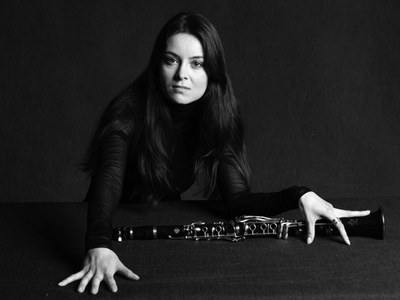
Maryse Legault received her master’s degree at the Koninklijk Conservatorium Den Haag
in June 2017, in the studio of Eric Hoeprich. Maryse had the opportunity to perform with many ensembles, including The Orchestra of the 18th Century and MusicAeterna, under the direction of Teodor Currentzis. The first graduate in Quebec in the field of historical clarinets, Maryse is fascinated by research and specializes in the virtuoso phenomenon of the turn of the 19th century. She has written the first comprehensive biography about the 18th century international clarinetist Josef Beer (1744- 1812) and is currently pursuing a doctorate at McGill University. She has presented her research as a guest lecturer at Oxford University and is recipient of the Sylva Gelber Prize.
In Carta ao Rito da Arena (Letter to the Arena Rite) for remote interaction among musicians and dancers by Jônatas Manzolli, the performers interacting among themselves create an audiovisual narrative. Movements sensed by smartphones distributed in a network connect dance to music. The work alludes to sensations generated by social isolation: fuzzy moments produce a meaningless presence, expressing that someone is alive and surviving surrounded by an arena.
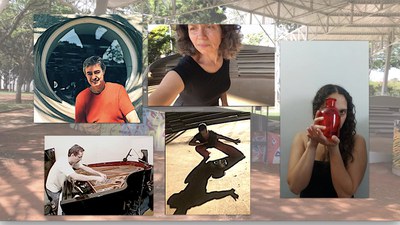
Remote performers researching the interaction of movement with sound perform this work. Together with the composer Jônatas Manzolli, the ensemble formed by performers from the Department of Dance and Music at the University of Campinas, Brazil: the pianist Alexandre Zamith, dancers Daniela Gatti and Mariana Andraus converse remotely among themselves and with Vânia Pontes, a dancer, and pianist, who is in Montreal.
ScoreCraft is a multiplayer music game exploring online music making mediated through gameplay. ScoreCraft is structured as a modular environment consisting of mini games and scenarios. Mini games require the players to produce a particular set of sounds in order to interact with the game, shaping low-level musical material. Scenarios determine how the mini games are arranged on a 2D board, organising the low-level musical material in the mini games into high-level musical forms.
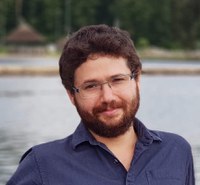
ScoreCraft is developed as part of Goni Peles' PhD on translating game models to music composition. Goni studies with James Saunders at Bath Spa University where he is part of the Open Scores Lab. ScoreCraft is co-presented by Yuval Adler, a ScoreCraft community member and collaborator. Yuval is a PhD student at McGill University studying with Stephen McAdams at the Music Perception and Cognition Laboratory. ScoreCraft is performed by community members from around the world.

